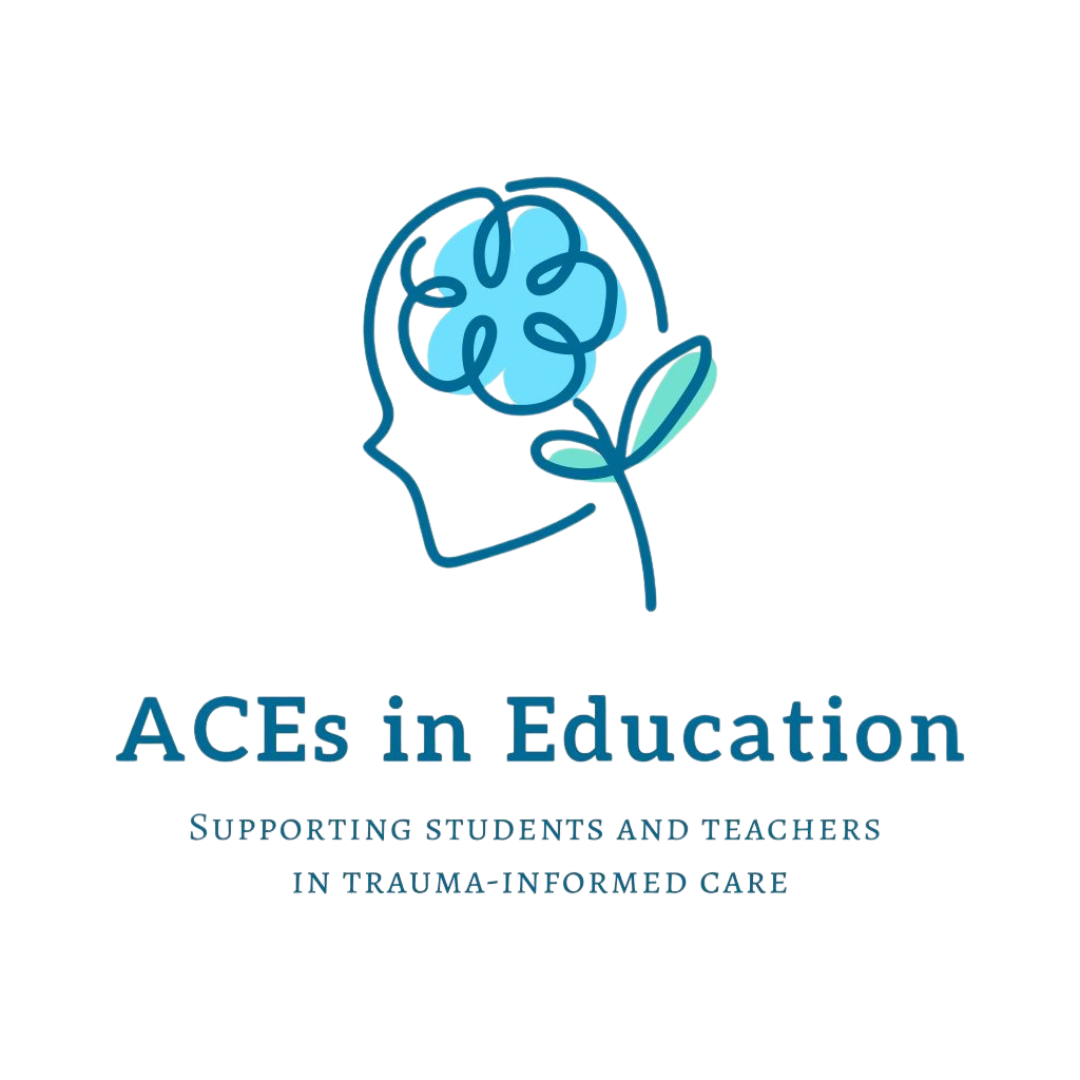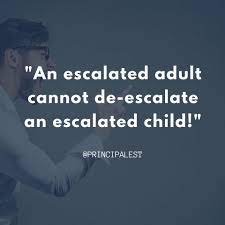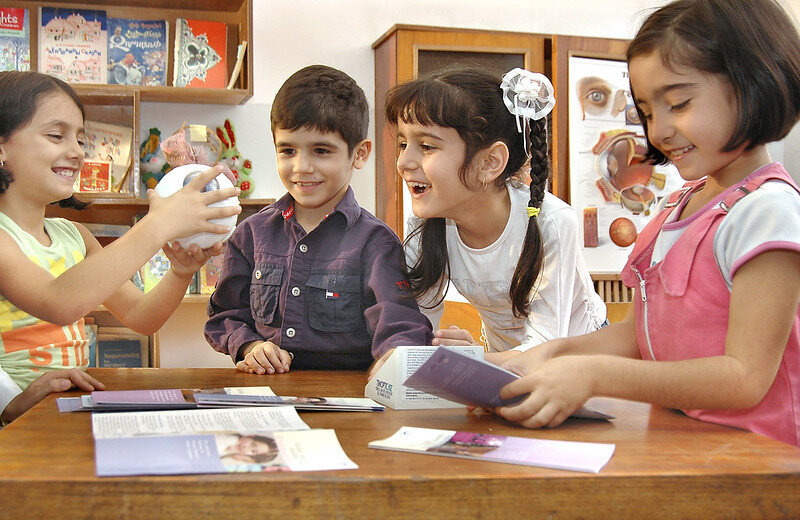
ACEs in Education Blog
Explore articles, stories, and resources designed to support educators in creating trauma-informed classrooms where students feel safe, connected, and ready to learn.
All My Life I Had to Fight
I am not much different from my students. I hate Saturday School when I have to get out of bed to be back in the building that exhausted me the week before, but I love it after I get there and have meaningful interactions with students in a more casual environment. Like this one:
"Hey Ida B. Wells!"
"I like it when you call me that!"
"Do you remember why I started calling you that?"
"Yea. Cuz you said I was outspoken and had a lot of strong opinions about things."
"That, and that if you use all your passion for good you can change the world."
"Oh yea, that too."
" I've been hearing that you have been getting in trouble lately." "Is that true?"
"People get on my nerves. They say all kinds of stuff."
" You know, you don't have to always fight to win. Fighting isn't the answer."
"All my life I've had to fight!"
Her words silenced me.
The Color Purple.
And I remembered this scene.
All My Life I Had to Fight
Fight is what the brain tells us to do when we feel threatened. Fight is what students who have experienced trauma instinctively do when they do not feel safe. Fight is the reaction we get when we speak to students who come from trauma in authoritarian, aggressive, or escalated ways. Fight can look like disrespect or ignoring or avoiding; both are reactions of protection. Fight can look like lashing out or a full-on fit. Whatever the reaction, there are things we can do to lessen the fight response.
1.Be aware of the tone and volume of your voice. No one likes to be yelled at or spoken to with contempt and condemnation; especially students who come from trauma. If a child or teenager is walking this earth with an overactive stress response, being yelled at is an immediate trigger and their already heightened stress response will go into overdrive. Many times their response is to protect themselves by either yelling back or fleeing. When correcting or confronting a student, use a firm, but calm voice. You can be authoritative without belittling or yelling at a student.
2. Build connections and relationships with students. Trauma happens in the context of a relationship and it is only healed in the context of a relationship. Research shows that students who have experienced trauma can build resilience when they have the presence of one stable caring adult in their life. Many times that adult is a teacher. For discipline and correction to be effective, they must be done in the context of a safe relationship. We must connect before we correct!.
3. De-escalate an escalated student. You cannot reason with an escalated student. You can talk until you are blue in the face, and do you know what they hear? Nothing. Nada. Zilch. An escalated student is operating out of their survival brain. When their reactions are driven by emotions or fear, they physically cannot access the thinking part of their brain. We must first listen, reassure, validate, respond, repair, and resolve. Then we can correct and teach and support them toward changed behaviors. Natalie Turner reminds us of some rules to remember when dealing with an escalated student: "Rule #1. Take nothing a raging kid says personally. Act like a duck: let the words roll off your back like drops of water. Rule #2. Don't mirror the kid's behavior. Take a deep breath. Wait for the storm to pass, and then ask something along the lines of, "Are you okay? Did something happen to you that is bothering you? Do you want to talk about it?" My favorite words to say to an escalated student once they are calm are, "How can I help?
4. Know your own triggers. What behaviors stress you out and get on your last nerve? Sometimes just being aware of what sets you off, can help you stay calm. Remember, an escalated adult can never de-escalate a child. The 5-second rule can always be applied when we are triggered by a student’s behavior. Pause for 5 seconds and breathe slowly before you speak. Remind yourself that raising your voice or being aggressive will not solve the issue, it will only escalate the situation.
We won't eliminate every fight response, but we can certainly reduce the negative ways our students respond by how we respond or react to them. When we can create classrooms that are safe and calm for our students, we will see a significant reduction in the fight response.
Update: Since our conversation, “Ida” has not gotten into another fight 😀. Students just want to be heard and understood. When we build those connections, real change can happen.
A Post-Middle of Pandemic Classroom
Students who feel safe in your classroom are ready to learn
Like millions of teachers across the country, I have spent the last weeks getting my classroom ready for students to return. My desks have been properly arranged for covid safe distancing while still allowing for collaboration and small group instruction. My supplies are placed in their proper color-coded baskets, and my bulletin boards have been freshly assembled. I am ready!
But, after 18 months of pandemic education, is that really all our students need?
Our students are coming back to the classroom with even more trauma than they may have already experienced pre-pandemic. What they really need is a safe, secure place to land. Yes, the organized, fresh classroom is part of creating that safe place; but, there is a lot more we can do to provide a safe, trauma-informed, and trauma-sensitive classroom.
Howard Bath, in his article The Three Pillars of Trauma-Informed Care, writes that there are three universal components to providing support to those impacted by trauma. They are:
1. Safety
2. Connection
3. Managing Emotions
In this three-part series, I will look at each of these pillars of trauma-informed care and offer some practical ways we can meet these trauma needs in the classroom. Let’s start with safety…
Safety
Unfortunately, the defining experience of any child who has experienced complex trauma is that of feeling unsafe. These children develop a pervasive mistrust of the adults with whom they interact, and as Seita and Brendtro (2005) point out, they become “adult wary,” employing a range of strategies that keep adults at bay. -Howard Bath
When was the last time you didn’t feel safe? Do you remember the racing heart feeling? Did you notice you were breathing with quick, shallow breaths? Did you want to fight, flee, or freeze? When we do not feel safe our pre-wired safety brain kicks into gear, ready to keep us alive. Our students who have experienced trauma come to us with an overactive survival brain. They are constantly asking the question, “Am I safe here?” “Can I trust this adult?” As teachers, we need to create a classroom that answers their questions with a definitive yes! It is not as difficult as you may think. In fact, many excellent teachers do these things without even knowing they are trauma-informed practices.
Consistency, reliability, predictability, availability, honesty, and transparency are all attributes that are related to the creation of safe environments for children. -Howard Bath
Below are 4 ways you can create a classroom that provides a sense of safety for all students; but especially those that come to you who have experienced trauma.
A disorganized classroom can cause students to feel anxious and become distracted.
Provide a Calm Space.
Both the tone of your voice and the lighting in the classroom can help to create a space that is calm. Students who come to us having experienced adverse childhood experiences are many times in a state of dysregulation; their stress response is in overdrive. When we use loud, aggressive tones it will almost always escalate a student and lead to a student shutting down or acting out. Speak with calm authority, and you will find your students are much more attentive and responsive. Harsh, overhead, fluorescent lighting can create a feeling of anxiety, bodily stress, or hyperactivity; all things the kids with an overactive stress response are already prone to. Add floor lamps with soft light to your classroom and turn off the overhead lights. You can also cover several of the overhead lights with fluorescent light covers. You can find them here. More on creating calm when we look at managing emotional responses in part 3.
Provide predictable and consistent procedures
Children who have lived in chaos crave predictability. If the home is a place where they do not know what is coming next or what they can count on, a classroom that has consistent procedures will provide a much-needed sense of safety. Post the day’s agenda in the same place every day. Be consistent in your rules and classroom procedures. Take time at the beginning of the year to explain, rehearse, and correct the expected behaviors and procedures. The more the students know what to expect, the safer they feel.
Provide an organized classroom
As a former type B teacher, I have had to grow in this area. I used to be a pile person; organization and neatness were not my gifts. Students who come from a chaotic place benefit from an organized and neat space. A clean, organized room helps to create a sense of safety and calm. Take note of your bulletin boards and walls. Are things just randomly put up, or is there order? Are your walls and bulletin boards too busy? Sometimes, less is more. An unorganized, cluttered room can be distracting and unsettling to students with a trauma background.
Provide smooth, predictable transitions
Transitions can be especially tricky for students who come from trauma. To provide a sense of safety, your classroom transitions must be predictable and have plenty of warnings about what is to come. Your transitions should have a clearly explained sequence of events as well as pre warnings and countdowns to transitions. Below is an example of a trauma-sensitive transition that creates a sense of calm and safety in your classroom.
Modified from TREP Project article “Consistency and Predictability”
Safety is a student’s number one need; so much more so if they come from hard places. By providing a calm, organized, and predictable classroom we can ensure our students feel safe and are able to learn. In part 2 of this series, we will look at the second pillar of trauma-informed education: Connection.
“What is good for trauma students is good for all students”
vir-tu-al-ly (nearly, almost) Impossible
How can educators build strong relationships while teaching virtually
When I started teaching some gazillion years ago, I cranked out (literally, you cranked a handle) copies on a mimeograph machine. I had the purple fingers to prove it. I taught so long ago, that I was one of the chosen few who had A computer in my classroom...an Apple IIe; the e was for enhanced in case you were wondering. It sat in the corner of my room like a shrine to the future of technology in the classroom. To be honest, I was a bit afraid of it. Cranking a handle I could do, but computers have always stressed me out. Maybe it was because I never recovered from the trauma of taking a computer science class in college and dropping all the BASIC computer cards right before I needed to turn them in. It was a dark time in my life. I would rather not revisit it. Who knows. Suffice it to say, I am no Steve Jobs. Technology has never been my forte.
Thanks Covid. Now my entire teaching life is technology.
Teaching is now all...
Screencastify
and Loom
and Zoom
and Play Posit
and Flip Grid
and Pear Deck
and ClassLink
and Google Classroom
and Securely
and Schoology
and I can even create a Bitmoji classroom.
But you know what I can't do? I can't shake hands every morning with my students. I can't look them in the eye and know how they are doing. I won't know who didn't have a good night based on their body language. I won't be able to celebrate a win on the court or field from the night before. I won't know who needs a hug or be able to give them one. No more high fives. No more almost getting knocked over by a particular student giving me a hug. ( I think I will miss this the most) No more jokes in the hallway as students pass my room. No more spontaneous conversations about life. No more up close and personal interactions.
Virtual relationships are not the same.
And for me, teaching is all about the relationships.
Authentic, spontaneous, genuine, relationships.
Not the sterile, virtual kind.
I can learn how to use Screencastify and Pear Deck. I hate Flip Grid, but I will use it. I will Loom and Zoom and Play Posit. Maybe I will even figure out how to have a Bitmoji classroom. Who am I kidding? No I won't.
But how am I going to build relationships with students virtually like I could when they were right there in front of me?
How will I build trust and create a safe place for them to land?
These are the questions that keep me up at night. Well that and the fact that I have gained enough Covid weight that now I snore and wake myself up every two hours.
But still.
I believe building relationships is more important than ever before for our students. Creating meaningful connections is the second pillar of creating a trauma informed classroom. You can read about the other 2 pillars Here . All of our students are coming to us having experienced the trauma of a pandemic. Some will have less of an impact than others, but all will have experienced some negative effects. More than ever, all students will need a classroom that creates safety and strong connections.
The challenge is to do it virtually.
I do not have it all figured out yet. But one thing I know for sure is, as educators, we will make it happen.
But does it have to be with Flip Grid???
Also, if Mr. Rogers could do it then so can I.





